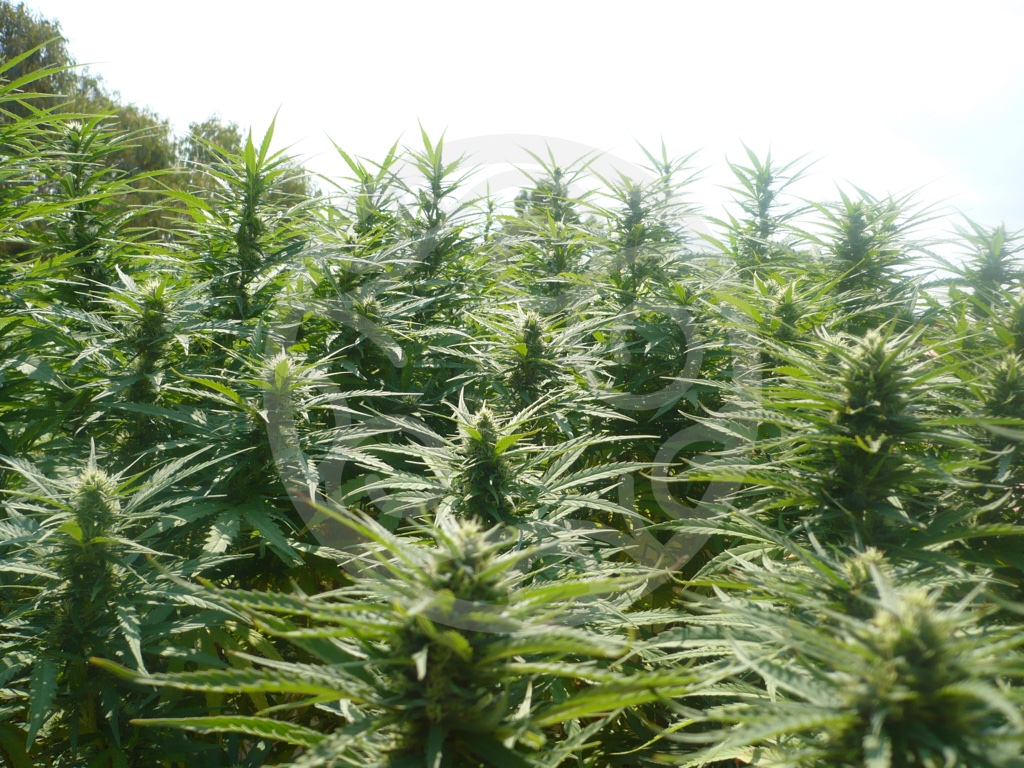The FIM pruning technique and cannabis
List of contents
Whether they cultivate cannabis indoors, outdoors or in greenhouses, many growers like to apply various training or pruning techniques in order to maximise the yield of their plants and thus obtain the most abundant harvest possible. These types of techniques can be of high impact and cause stress, such as pruning (where some part of the plant is cut, no matter how small) or low stress, with less negative impact. A perfect example of the latter would be Low-Stress Training, where the branches of the plant are tied so that it grows with a structure determined by the grower, but where there is no pruning or cutting of the plant, it is simply guided in its structural development.
Today we are going to discuss a high-stress technique - because it involves pruning - although as you will see it differs slightly from the classic apical pruning or topping, as it is usually called. What we're talking about is the FIM pruning technique, with which we will achieve even greater development of new buds and lateral branches than that achieved with the tried and tested technique of apical pruning. Let's see what this it's all about!
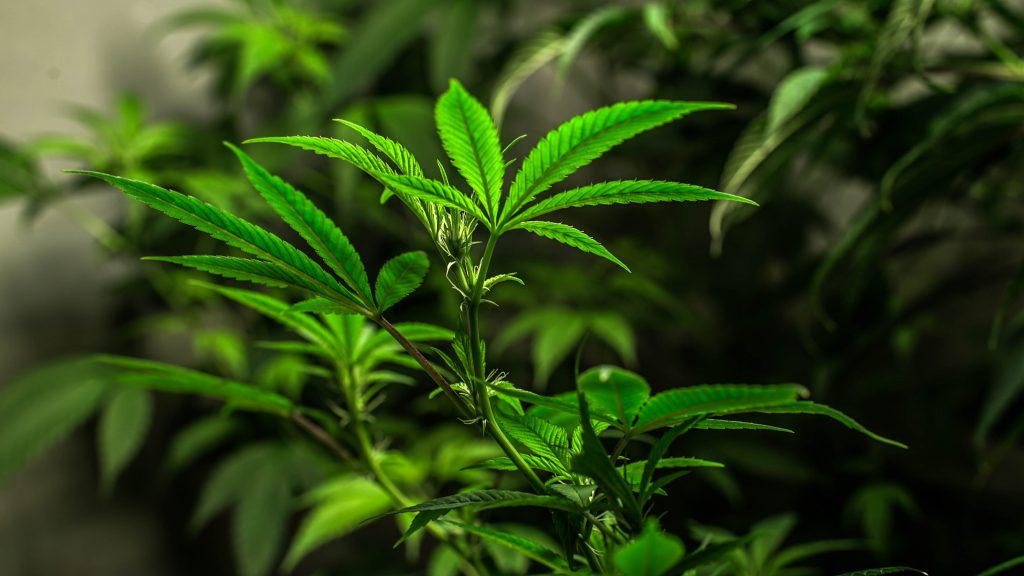
Apical pruning or topping, a classic of cannabis cultivation
For decades, this method of pruning has been used to stop the vertical growth of the main stem of the plant, so that two things are achieved: on the one hand, halting the growth of the stem for a few days allows time for the rest of the plant's lateral branches to grow, achieving a structure where these branches reach a greater height and, therefore, get better exposure to the light source. This can represent a great advantage, especially in indoor cultivation, where the light source is fixed and the plants develop their best flowers at the tips of the branches.
On the other hand, applying this type of apical pruning (in which basically we remove the youngest shoot of the branch that is being worked) means that, when growth resumes, that branch will divide at the point where we have pruned it so that now we have two tops where before we had only one. Of course, this technique can be applied to any branch on the plant, not just the main stem, and is often used by clone producers to get the maximum possible number of branches, and therefore cuttings, from a mother plant.
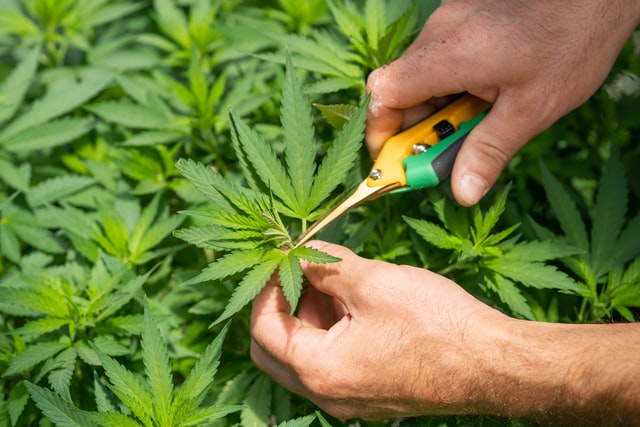
Apical pruning is recommended on plants with at least 4-5 nodes and especially during vegetative development or the growth phase, and even during pre-flowering for plants with sufficient vigour, such as Lemon OG Candy or Amnesika 2.0. To carry out the pruning, we will use a sharp, sterile blade or scissors, and we will remove the youngest shoot on the branch, the one at the very tip; After a few days, we will be able to observe how two new shoots begin to form, one on each side of where we had the one that we have removed. We've got two growing tips now where there was only one before!
FIM pruning or fimming, a happy accident
FIM pruning, a curious story
The origin of FIM pruning is really curious because its name is an acronym of the English expression "Fuck, I missed". Legend has it that a grower, somewhat lazy, began to perform apical pruning of his plants without taking much care, and just using his fingers. Without realising it, in many cases, he had not removed the entire shoot or bud, but only part of it. His surprise came after a few days, when he observed how instead of the two new shoots he expected to see, he found 4 new shoots, and this had only happened on the "badly pruned" branches. By accident, he had discovered a pruning technique that today is widely used to maximise plant yields.
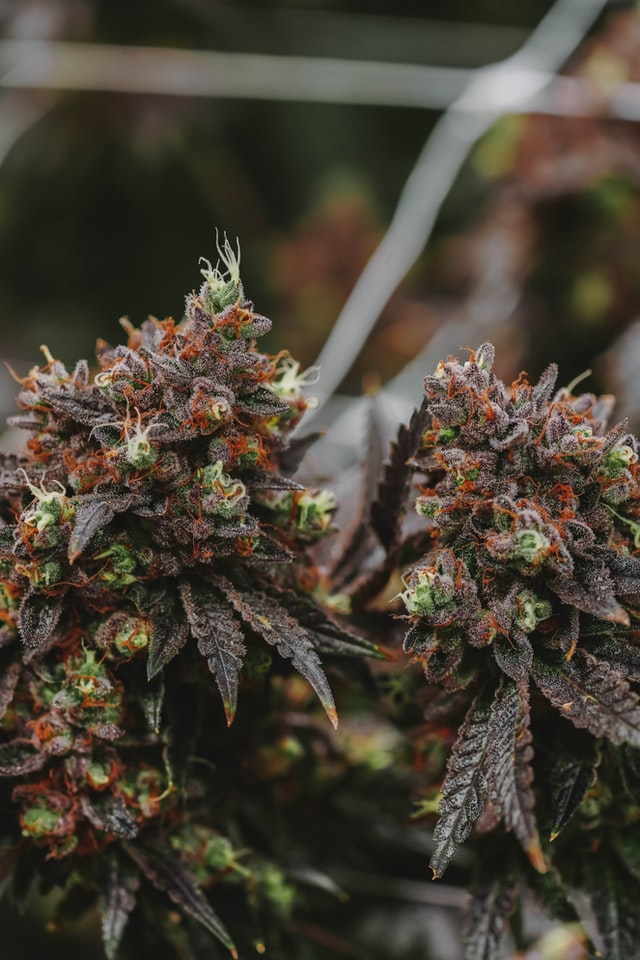
Benefits of FIM pruning in cannabis cultivation
We have seen how, in a similar way to apical pruning, FIM pruning or fimming allows us to multiply the number of apical tips of our plants, while at the same time promoting the development of lower and lateral branches so that the plants acquire a more bushy structure and with more growing tips in its upper area. We also know that represents a great advantage in indoor cultivation, where we want the maximum number of flower sites that cover the entire cultivation canopy in a homogeneous way, all at a similar height.
Logic (and also practice) indicates that this is an ideal pruning method to combine with the SCROG technique, or in any situation where we have a small number of plants from which we want to make the most. Thanks to FIM pruning, we can therefore cover a given area of cultivation using significantly fewer plants than in the case of the SOG technique, for example, which is also a great advantage in many outdoor gardens.
Like any pruning technique, it also helps us to limit the height of the plants, something that's very useful both indoors and in gardens or terraces, where plants often have to stay below a certain height to remain discreet. In addition, the final harvest of the plant is spread over a greater number of somewhat smaller flowers, which does not affect overall production (rather it increases it) and on the other hand makes things more difficult for fungi such as botrytis to take hold, a lover of large, dense buds.
Of course, it is also a great technique when it comes to obtaining the greatest possible number of clones in the shortest possible time from a single plant, or from a certain area, because after all, what we're doing is multiplying the number of apical tips on the plant, which are the ones of most use when making cuttings. This type of pruning can also be applied "infinitely", being able to be done first on each shoot and then again on each of the new tips or shoots that we have created with the first pruning.
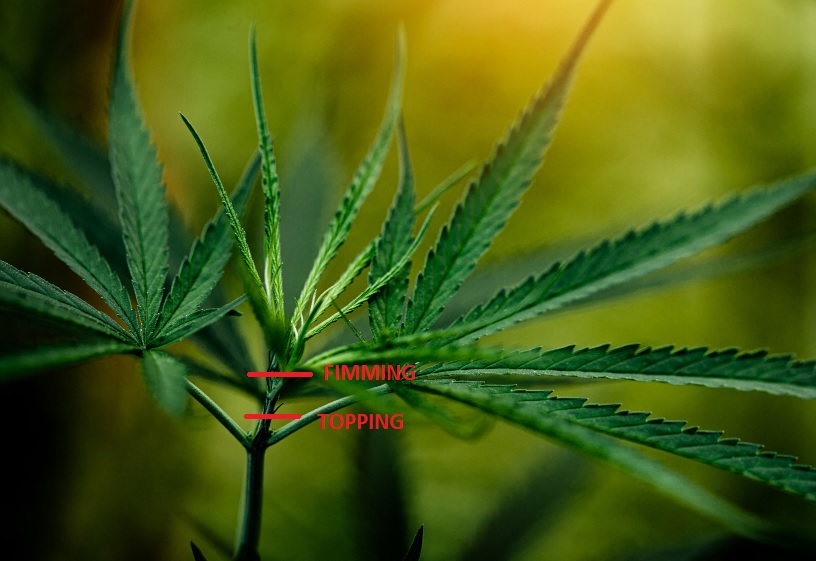
How to perform FIM pruning on cannabis plants
Below, we are going to see how FIM pruning is done and how it differs from topping or apical pruning you've always done in the past. In fact, in terms of methodology, it only varies in the aspect that we have already mentioned; while apical pruning removes the new shoot from the tip of the branch in its entirety, leaving a cut shoot with a node on each side (from where the two new shoots will grow), to use the FIM pruning tech we must remove approximately 60-70% of the shoot, leaving its base intact. In this way, the new shoots will grow from the base of the shoot that we have left, and in most cases, the plant will form 4 rather than 2 new shoots. In this article you will find photos of the process step by step:
Pruning techniques for marijuana
In this post we will first look at the most commonly used pruning techniques, which offer guaranteed results and can be easily applied to the Philosopher Seeds marijuana strains, both indoors and outdoors. Make sure to use these simple techniques, well known in the cannabis world, to ensure you optimise the outcome of your garden with medicinal plants.
As always when we make any type of cut on a plant, we advise you to do it with sharp and properly disinfected scissors or a blade. We don't want to infect our plants with anything that could harm them and compromise our harvest! In short, this is a very useful technique to encourage the plants' horizontal development, distribute the harvest over a greater number of bud sites, and achieve a much higher number of clones per mother plant or square metre than in the case of not pruning.
So that's all our summary of this interesting pruning technique, as always we encourage you to leave your doubts, comments, or advice so that we can all continue learning in this exciting world of cultivation.
Happy harvests!
